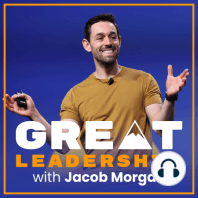76 min listen

Former VP of Amazon Shares Insights, Stories, and Secrets From Inside The Company
Former VP of Amazon Shares Insights, Stories, and Secrets From Inside The Company
ratings:
Length:
56 minutes
Released:
Oct 18, 2021
Format:
Podcast episode
Description
Colin Bryar is the co-author of the bestselling book Working Backwards: Insights, Stories, and Secrets From Inside Amazon. He’s also the co-founder of Working Backwards LLC and he is the former VP of Amazon. He started working at Amazon four years after the company started and he was there for 12 years, working very closely with Jeff Bezos. Colin says it was a fantastic experience working at Amazon and during his time there they were inventing and creating a lot of the products we know today like Amazon Prime, Kindle, and Fulfillment by Amazon. The management team that Colin was a part of was also working on building processes within Amazon so that the company could scale 10 and 100x. He says, “I learned a ton about not only what it what it's like to take an idea on a whiteboard and turn it into a household name, but also how to create simple processes that work across a number of different types of organizations to build in your company and grow fast while we're remaining nimble and true to your roots.” What was Amazon like in the early days When Colin was working at Amazon there were only around 500 people working at the company and 100 people in the corporate area. They had two fulfillment centers in customer service. The company now has over 1.3 million employees. Colin says in the early days it was a very intense environment and their mantra was get big fast. They very quickly went from a single category retailer, selling books, to multiple categories. They expanded into the UK, Germany, Japan and France very quickly. And because they were growing so rapidly in such a short period of time the company relied a lot on individual heroic efforts to save the day. There would be days where so many orders would come in that everyone would have to pitch in to get them out in time. “We quickly had to figure out we were facing the same growing pains that any fast growing company has, and we're trying to figure out how and when to layer in process, because we knew that doesn't scale, you know, there are only 168 hours in the week. And you can't work any more than that. You also have to sleep and eat and go home and spend time with your family. So we knew that we'd have to change the way we operated in order to continue to grow as fast as we were.” What does working backwards mean and how is the process used inside Amazon Amazon has a lot of processes that are unique and quite a few of them were created back when Colin was working there. These processes are all part of something that Amazon calls working backwards, which is where Colin got the title of his book. Working backwards is how they vet ideas and see if they are worth moving forward with. It’s really about starting from the customer experience and then working backwards from that. One of these processes is called PRFAQ, which stands for press release frequently asked questions. So when any employee inside of Amazon has a new idea they have to create one of these, and it is a six page paper. You start with a one page press release that clearly defines the customer problem you are trying to solve and it lays out exactly what your solution is. And then the paper is convincing the customer why they should adopt and use this solution and how it will make their life easier. Once someone creates a PRFAQ they present it to a team of senior leaders who will look over the document, maybe all in the same room together or maybe in different locations virtually, and after taking 20 minutes to look it over in silence they make comments on the idea and ask questions. The reason behind adopting this method was, as Colin shares, “A SWOT analysis--strengths, weaknesses, opportunities, threats--is a typical type of tool. That's a skills forward approach. We did that up until about 2003-2004. And we realized that we were not, we were forgetting the customer, too often. So the customer is not with us on that journey. And so Jeff said, we want to make sure the customer from the very beginnin
Released:
Oct 18, 2021
Format:
Podcast episode
Titles in the series (100)
Digital Upskilling: How PwC Is Ensuring No Employees Get Left Behind In The Digital Revolution: With Mike Fenlon, Chief People Officer at PwC US by Great Leadership With Jacob Morgan